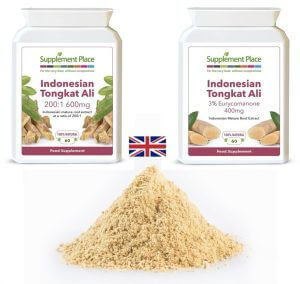

This article explores the various touted benefits of purified shilajit, with a focus on those that are proven in properly done scientific research, as well as any potential common side-effects and downsides. It is worth noting that most of the studies on benefits are based on animal models, with only a couple of human clinical trials.
Shilajit has been an essential part of folk and alternative medicine, including in Ayurvedic and Tibetan practice, and has been used as a remedy and cure-all for thousands of years. Himalayan Shilajit supplements are often viewed as the purest type of Shilajit that you can buy due to mineral-rich compounds, mostly sourced from regions of Nepal, India and some parts of Pakistan.
Shilajit is a natural-organic mineral product formed normally high in the mountains, often at altitudes of 15,000 ft and up. It looks like a blackish-brown powder or resin and is often found in places like the Himalayas, Pakistan, Bhutan, and even Peru.
Assuming you are taking pure Himalayan Shilajit (than fake ones comprising of coal or ozokerite), there is no conclusive theory as to how Shilajit was actually formed, but some suggest that it is formed as a result of the decomposition of oil rocks by microorganisms. Other analyses suggest that it is of plant origin and, most likely, is the product of very slow decomposition of plant matter.
Pure raw Shilajit is composed of humins, humic acid, and fulvic acid. Fulvic acid forms the major bioactive ingredient of Shilajit that accounts for 60 – 80% of its compounds. Other elements present in shilajit include fatty acids, resins, albumins, polyphenols, phenolic lipids, triterpenes, sterols, aromatic carboxylic acids, coumarins, latex, gums, and amino acids.
Given that shilajit has become increasingly popular in a world hungry for natural solutions to boost vitality, libido, fertility, and improve wellness and lifestyle in general, we thought this would be a perfect opportunity for a deep-dive into this ancient remedy that has found renewed life in the modern world.
Raw shilajit and purified shilajit offer distinct variations in terms of processing and composition. Raw shilajit is the unprocessed, resin-like substance directly harvested from rocks in mountainous regions. While it contains a spectrum of minerals, organic compounds, and fulvic acid, its potency may vary, and it is very likely to contain dangerous contaminants like heavy metals, mycotoxins, and free radicals.
Purified shilajit undergoes additional processing to eliminate contaminants, ensuring a more standardized composition. This purification is supposed to enhance consistency in quality, making it a preferred choice for those seeking a more controlled and refined supplement.
The purified form of shilajit is used in traditional medicine as a remedy for several diseases, particularly chronic ones. Traditional uses of shilajit primarily focus not only on diabetes and urinary tract diseases, but also for swelling, tumours, muscle degeneration, epilepsy and even mental health disorders.
However, due to the largely unregulated nature of shilajit supplements and products, many commercial samples of supposedly purified shilajit supplements are, in fact, contaminated with heavy metals. There is also a real risk that most of these products are not even made with real shilajit but are instead produced from solvent extracted soil or coal mixed with fulvic acid used in fertilizer.
Lets deep-dive into the health benefits of Shilajit and side effects to understand if there are tangible advantages or benefits vis-à-vis the downside risks.
Infertility
In one clinical study, 60 men suffering from infertility were treated with 100mg of processed / purified shilajit (PS) twice daily for 90 days. 28 of the test subjects who completed the treatment showed significant (P < 0.001) improvement in spermia (+37.6%), total sperm count (+61.4%), motility (12.4-17.4% after different time intervals), normal sperm count (+18.9%).
Testosterone
In one clinical study of male volunteers between the ages of 45 and 55, half of the participants were given a placebo and half were given a 250mg dose of purified shilajit twice a day. After 90 consecutive days, the study found that participants receiving purified shilajit had a significantly higher testosterone level compared to the placebo group.
Fatigue
In an animal study from 2012, researchers gave rats shilajit in doses of 25mg to 100mg for 21 days, and then induced chronic fatigue syndrome (CFS) by making the rats to swim 15 minutes for 21 consecutive days. The results cited that shilajit helped reduce the effects of CFS. Those conducting the study postulate that this was the result of shilajit supporting the prevention of mitochondrial dysfunction.
Anemia
An animal study divided 18 rats into three groups of six. The researchers induced anemia in the second and third group. Rats in the third group received a 5,000mg dose of shilajit after 11 days. They collected blood samples from all groups on the 21st day. The results revealed that rats in the shilajit test group had higher levels of hemoglobin, hematocrit, and red blood cells compared to rats in the second group.
Cardiac health
An animal study tested the cardiac performance of shilajit on two groups of lab rats. After receiving a pretreatment of shilajit, one test group of rats were injected with isoproterenol to induce heart injury. The study found that rats dosed with 250mg and 500mg of shilajit prior to cardiac injury had fewer cardiac lesions.
Other proposed benefits
As an antioxidant with high levels of fulvic acid and over 84 minerals, researchers postulate that shijalit could be useful for a number of conditions such as Alzheimer’s disease, diabetes, and high-altitude sickness.
In terms of Alzheimer’s disease, researchers think that the high levels of fulvic acid in shilajit may inhibit the abnormal buildup of tau protein and reduce inflammation, potentially improving symptoms related to Alzheimer’s.
With high-altitude sickness, researchers suggest that the antioxidant nature of fulvic acid in shilajit could help counteract several of the negative symptoms associated with higher altitudes.
As for diabetes, some animal model studies involving rats show promising results in terms of reducing blood glucose levels.
Heavy metal contamination
Shilajit, whether raw or purified, has been evidenced to contain heavy metal ions, which can pose various short-term and long-term health issues related to heavy metal toxicity, including vomiting, stomach pains, nervous system, kidney and liver damage, and more. The consumption of products containing shilajit has been associated with lead, arsenic, and mercury poisoning in some cases. The existence of Thallium (Tl) found in 95% of Shilajit supplements presents a health risk if you are consuming in large quantities (high dose) or when taking daily.
Fungal contaminants
Shilajit can contain deadly fungal contaminants, like Aspergillus niger, A. ochraceous, and Trichothecium roseum, which when ingested turn into mycotoxins in the body. These can lead to various side-effects of varying severity including respiratory problems, skin irritation, gastrointestinal distress, and, in some serious cases, organ failure.
Fatigue
In an animal study from 2012, researchers gave rats shilajit in doses of 25mg to 100mg for 21 days, and then induced chronic fatigue syndrome (CFS) by making the rats to swim 15 minutes for 21 consecutive days. The results cited that shilajit helped reduce the effects of CFS. Those conducting the study postulate that this was the result of shilajit supporting the prevention of mitochondrial dysfunction.
Free-radical contaminants
Shilajit can become contaminated with external free radicals from the environment, processing, storage, and even packaging. Consuming shilajit that is contaminated with external free radicals can counteract its antioxidant properties, leading to increased oxidative stress and side effects like accelerated aging and increased risk of chronic diseases associated with inflammation.
Increased iron levels
Shilajit can increase iron levels in the blood significantly, as found in animal model studies. People with conditions such as hemochromatosis (a genetic condition that causes excess levels of iron in the blood) or chronic liver disease should avoid it.
Gastrointestinal issues
Shilajit can cause gastrointestinal issues like nausea, vomiting, and diarrhea, especially when consumed in larger doses.
Interaction with medication
Shilajit can lower blood pressure and blood glucose levels and could be dangerous for those on medication for blood pressure or diabetes.
No clinically determined safe dosage
There is not enough scientific evidence to determine a standard or appropriate dose of shilajit. Studies investigating shilajit have used varying amounts, with the participants generally under medical supervision.
Heavy Metals in Shilajit Raise Safety Concerns
Shilajit sourced from the Himalayan regions (India, Nepal), Russia, Kyrgyzstan and Iran contain toxic heavy metals such as thallium (Tl), known to be dangerous to humans, animals, plants, and microorganisms, presenting a significant health hazard when consumed on short-term or long-term basis.
A research study published in 2025 showed that thallium is present in most Shilajit supplements sourced from the Himalayan region including those from Poland and Russia. This is considered high risk as the heavy metal can be absorbed through the skin and mucous membranes affecting the central nervous system and. Researchers and experts believe that thallium is present in 95% of Shilajit supplements sold in the US, UK and Europe.
“Thallium can spread rapidly throughout the body and accumulating in various tissues, including bones, kidneys, and the central nervous system” said Elham Kamgar, the lead researcher who discovered the high Thallium content in Shilajit samples taken from various countries and region (shown in the table below).
Country | Region | Average Thallium (Tl) found in Shilajit (µg.g− 1)
| Shilajit Health Risk |
Iran | Kahnuj | 0.210 | Very Toxic |
Iran | Saravan | 0.226 | Very Toxic |
Nepal | Central | 0.143 | Very Toxic |
India | Unknown | 0.063 | Toxic |
Kyrgyzstan | Unknown | 0.003 | Moderately Toxic |
Table showing heavy metal content Thallium from pure Shilajits sourced from various countries.
Pure Shilajit may not be safe too
“Don’t fall for pure Shilajit from the Himalayas. Purity does not mean it is not toxic” said a Emily Wallace, a registered nutritionist from Birmingham, United Kingdom. She noted that many best selling Shilajit such as NUTRiHERBS Shilajit Resin Ashwagold, GYMNEX Shilajit Gold Capsules, Dabur Himalayan Shilajit Resin, Zandu Shilajit Gold Plus and Homeda Pure Himalayan Shilajit Original may contain high quantity of Thallium between 0.19 µg.g− 1 to 0.41 µg.g− 1 for 1,000mg of Shilajit supplement which are considered toxic if taken daily.
The safety issue of Shilajit raises more concerns in 2025 as there is no regulation and some lab tests may not detect the high levels of Thallium that are present in Shilajit supplements. The safety limit (LD50 ) of Thallium for humans ranges from 8 to 12 mg.kg− 1, indicating its potent toxicity when exposed or digested in large quantities.
Pure Shilajit from Kyrgyzstan and Poland may also pose health risks due to the high content of Thallium at 0.31 µg.g− 1 and 0.192 µg.g− 1 respectively.
Shilajit Exposes More Health Risks by Authorities
Shilajit Supplement may face higher safety scrutiny as the U.S. Environmental Protection Agency has identified thallium (Tl) as “a priority contaminant” due to its mutagenic properties, cancer-causing, and may cause birth defects when consumed by pregnant women.
According to health experts, prolonged exposure to thallium has been associated with various side effects such as damage to the liver, testicular tissue, the kidney, hair loss and intestinal damage. And taking Shilajit as a daily supplement for more than two weeks expose your risk by 10x. Additionally, thallium is on the US Environmental Protection Agency’s list of 129 priority pollutants due to its high toxicity. That begs the question if you should even try Shilajit short-term given the above risks highlighted by the authorities.
By today’s dietary supplement standards, the risk of consuming Himalayan Shilajit supplements is relatively high due to lack of standardization by manufacturers and 3rd party lab tests by credible organizations such as EUROFINS or SGS.
Scientist Elham Kamgar further warned consumers that “Given that Thallium in Shilajit can accumulate in various organs of the body, prolonged consumption of Shilajit with high Tl content may pose health risks.”
The World Health Organization (WHO) estimates the Thallium Safety Limit is below 0.002 ppm (for drinking water), making Shilajit supplement rather a risky dietary supplement to be taken daily at this present moment.
Symptoms of Thallium Poisoning
Taking Shilajit with high thallium content may cause neuropathic issues or diseases, significant hair loss, major or gradual cognitive impairment, and severe kidney damage.
Always ensure that you buy Shilajit supplements that are 3rd party lab-tested for heavy metals including thallium, arsenic and lead by independent or reputable laboratories such as EUROFINS.
While there is promising data on the potential benefits associated with purified shilajit, due to scarcity, rarity, and difficulty harvesting, it is very hard and expensive to acquire genuine pure shilajit. Experts suggest that consumers intent on purchasing look out for a certificate of analysis and consider the whole testing and production process in general. But whether Himalayan pure shilajit is a miracle of the natural world or a toxic minefield still hinges on several factors, including industry regulations, the quality of the substance sourced, the purification process, further human clinical testing, as well as testing for dosage and its effect on humans.
For now, we would warn users to be cautious when buying even purified shilajit due to the sheer rarity of the substance, as well as the fact that there is ample evidence that a large number of commercial shilajit products on the market contain unacceptable levels of heavy metals or are just plain fake; this has even led to the substance being banned in some popular US supermarket chains like Whole Foods Market. Until there is a level of standardization that meets pharmaceutical standards and stringent regulation on sourcing, the risk associated with consuming commercial shilajit products remains precariously high.
There is ample evidence that both raw and purified commercial shilajit products on the market are contaminated with heavy metals and other contaminants. High iron content found in Shilajit may be toxic if consumed in high doses. There are limited human studies on the toxicity of Shilajit when used for long term, or at high doses. Currently the recommended dosage has not been established by any industry standards vis-à-vis the heavy metal content found in most commercial Shilajit products sold on Amazon.
We would caution against most people taking commercial shijalit until there is a better standardization for extracts and there is more regulation in terms of sourcing.
Based on clinical evidence, users who are taking high blood pressure and diabetes medication should avoid Shilajit. Those with excess levels of iron in their blood, pregnant women, and minors should also avoid consuming shilajit.
There are currently no studies on the safety of combining shilajit with Tongkat Ali in one supplement, so to be cautious we would recommend against taking both herbal supplements for testosterone or libido boost.
Raw shilajit should not be consumed in its unpurified and unprocessed form because it can be extremely toxic, with dangerous contaminants ranging from heavy metals to mycotoxins and free radicals. Purified Shilajit are deemed less toxic and safe by advocators, although there is lack of scientific evidence (or clinical studies) to back its toxicity and safety.
If you have purified shilajit from a reputable source, you can consider taking them both in small doses at separate times of the day, e.g. Tongkat Ali (morning) and purified shilajit (after lunch). There are no known adverse interactions for this combination. Standardized hot-water Tongkat Ali extract, in and of itself, is widely considered safe to take even at high doses (600mg per day) and suitable for long-term daily use, from 52 weeks to even 5 years.
Experts suggest looking out for a certificate of analysis and to scrutinize the entire sourcing and production process.
However, as there are no official regulatory standards on sourcing, production, or dosing, finding genuine purified shilajit will come down to luck as much as diligence.
There is not enough scientific data to determine an effective or ideal dose for Shilajit. Limited animal research studies have used doses ranging from 25mg, 50mg, 100mg, 250mg, 500mg, 2,500mg, and 5,000mg. Users should consult their nearest doctor or healthcare professional before consuming high doses of Shilajit more than 100mg per day.

Naressa Khan contributes regularly on AKARALI. As a researcher and investigative journalist, Naressa is all about creating, deconstructing, and reassembling meaningful content through words and facts. With this approach always in mind, she eagerly explores the nuances in life via the aspects of lifestyle, culture, travel, health, and wellness in Malaysia .
Our articles are third party reviewed by our panel of experts and medical advisors to ensure the facts are accurate and credible. These are validated against multiple source references which include but not limited to research studies, peer-reviewed journals, pre-clinical studies, clinical tests and other credible publications.
Our panel of medical advisors and experts are highly experienced in their individual fields. However, they do not provide any medical advice or recommendations arising from content published in this article.
Disclaimer:
The content published on this website is for educational purposes and should not be viewed, read, or seen as a prescription or constitute any form of medical advice. We recommend you consult your nearest GP or doctors before consuming Tongkat Ali or any products which contain Tongkat Ali. For further information, kindly refer to our Frequently Asked Questions (FAQ) for more information.
One Response
This article explores the various touted benefits of purified shilajit, with a focus on those that are proven in properly done scientific research